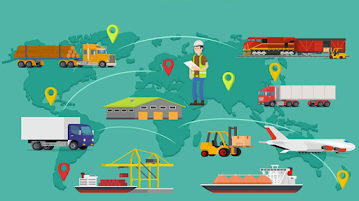This is Series 3 where we look into companies which could shape future in thermal energy storage and crystal ball gazing of the sector per se. 😊
Click
here for Series 1 where we had set the introduction to energy storage.
Another
strong contender has been thermal energy storage has a pretty unique
opportunity to be extremely low cost. The breakthrough grid-scale storage
solutions must last at least two to three decades and deliver long duration energy
discharge.
It's still
an emerging technology in this space, but it has the potential to store energy
for longer than flow batteries with a smaller footprint than gravity-based
systems.
Berkeley,
California-based Antora Energy, founded in 2017, is taking on this challenge.
Basically, when there's excess electricity on the grid, that's used to heat
up Antora's cheap carbon blocks, which are insulated inside a container. When
needed, that heat is then converted back into electricity using a heat engine.
Typically,
this could be a steam or gas turbine. But some say this tech is just too
expensive and has prevented thermal storage solutions from working out in the
past. So Antora has developed a novel type of heat engine called a thermophotovoltaic
heat engine, or TPV for short, which is basically just a solar cell, but
instead of capturing sunlight and converting that to electricity, this solar
cell captures light radiated from the hot storage medium and converts that to
electricity.
So it's
electricity in, electricity out, and it's stored in ultra-cheap raw materials
as heat in the meantime.
Recently,
Antora received funding from DARPA, Fifty Years and a joint venture between the
Department of Energy and Shell, who are excited by the company's potential to
provide days or weeks-long storage.
This could
be the solution currently unsolved by lithium ion batteries and that will sort
of enable the next wave of integration of renewables on the grid.
It's still
early days for Antora and Energy Vault though, and there's definitely other
creative solutions in the mix.
For example,
Toronto-based Hydrostor is converting surplus electricity into compressed air
(A-CAES) and Highview Power is pursuing cryogenic storage in a commercial-scale
50 Megawatt/250 Megawatt-hour plant in England.
They are using
excess energy to cool down air to the point where it liquefies. These ideas may
seem far out, but investment is pouring in and projects are being piloted
around the world. While these companies are all vying to be the cheapest,
safest and longest lasting, many also recognize that this is a market with many
niches, and therefore the potential for multiple winners.
In the
residential and commercial areas, you're gonna have a certain type of
technology. A lot of it will probably be battery-based.
I think as
you get to utility-scale and grid-scale, you're going to see some batteries,
you're going to see other types of compressed air and liquid air solutions, and
then you're going to see some of the gravity solutions that could be scaled.
Opinion : Evolving Environment of GHG Emissions and its mitigations
Overall, the battery energy storage market is predicted to reach US$12 billion by 2025, and likely reach 134.6 GW by 2030 from 8.5 GW annual capacity additions in 2020.
A'int it fantastic ?
But as
always, it's going to be tough to get even the most promising ideas to market. No
matter if the raw materials were dirt cheap (which will spark off another story sometime), the initial cost of a first system
is essentially astronomical.
Of course, government policies and incentives will play a major role as well. There is a production tax credit on wind and investment tax credit on solar. The Battery tech also needs to be treated with some push similar to the solar or wind till it takes off.
I strongly believe that eventually they market need of energy storage will push research focus automatically in the sector and we would see a rerating if the projection of market size actualization sooner than later :)
With the
right mix of incentives and ingenuity, we're hopefully headed towards a future
with a plethora of storage technologies.
The future
is not going to be a mirror of the past. We've got to do something that's
radically different from everything that's been done up until now.








